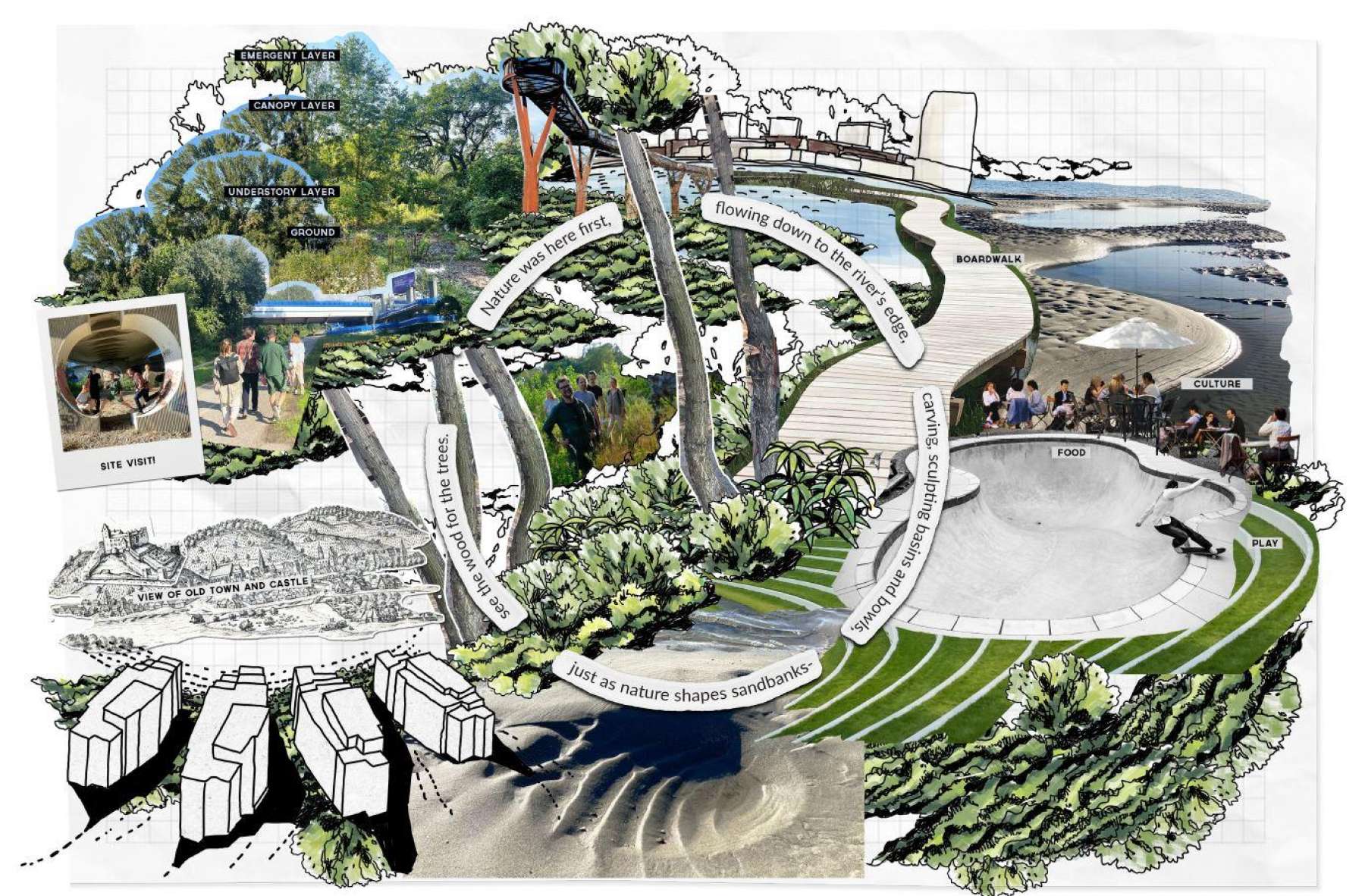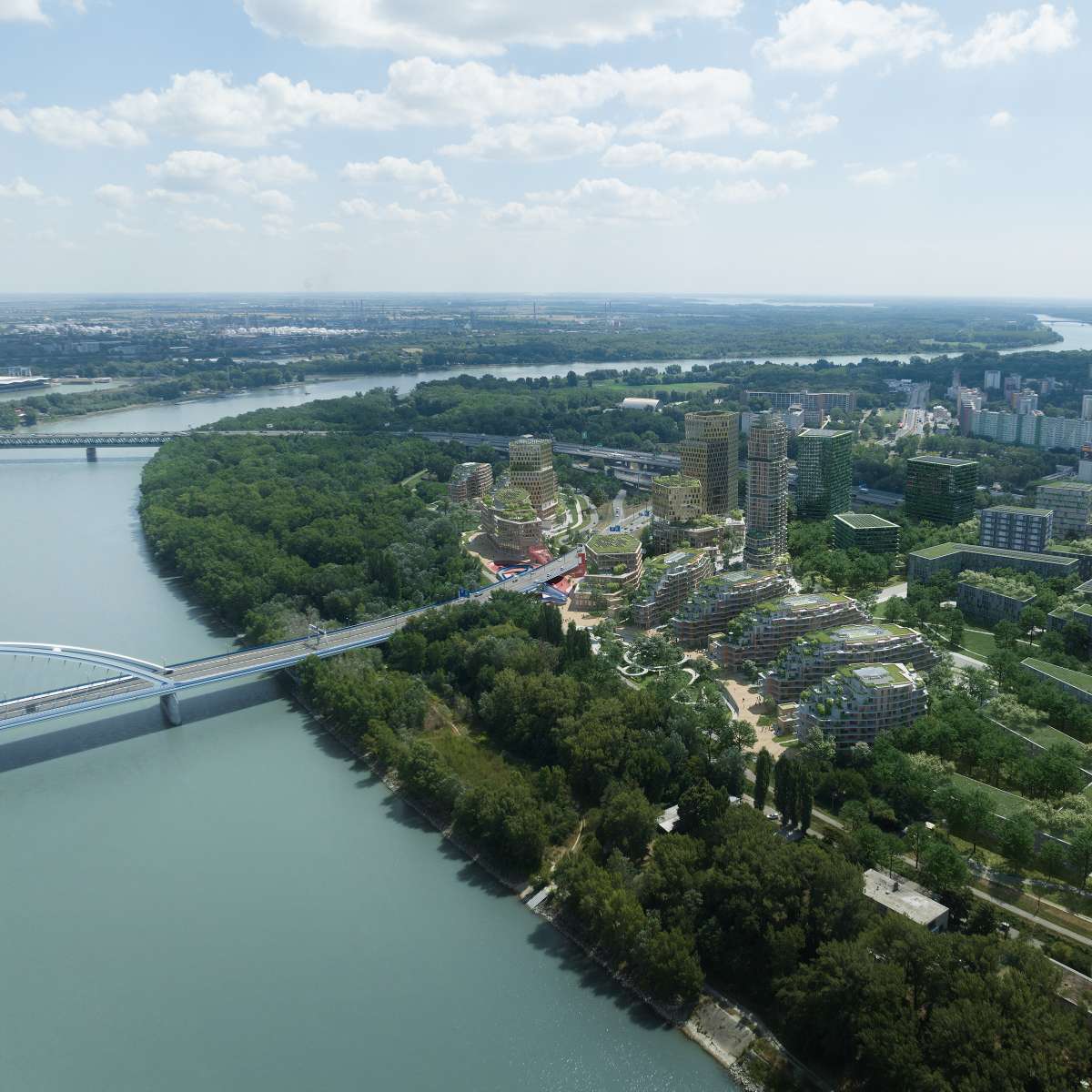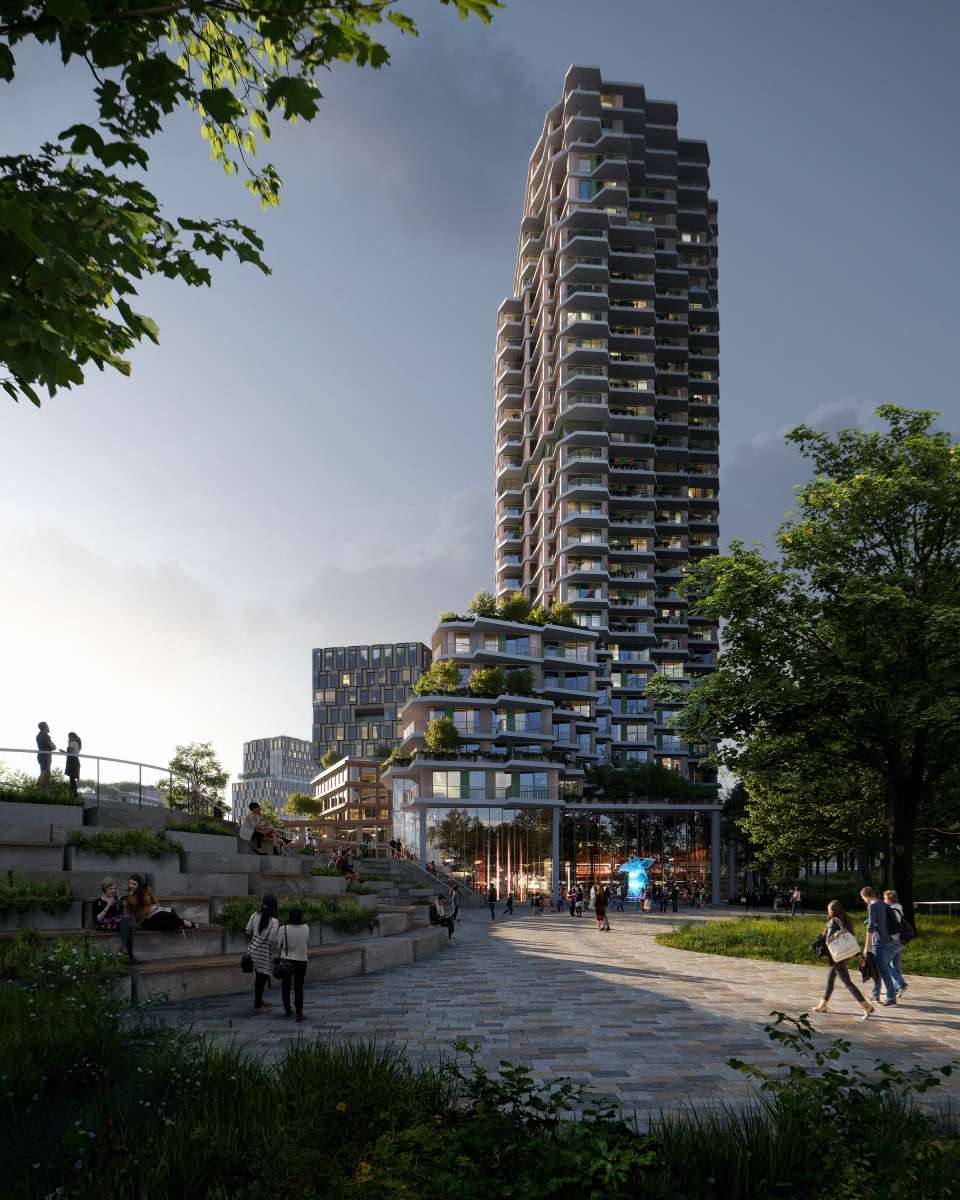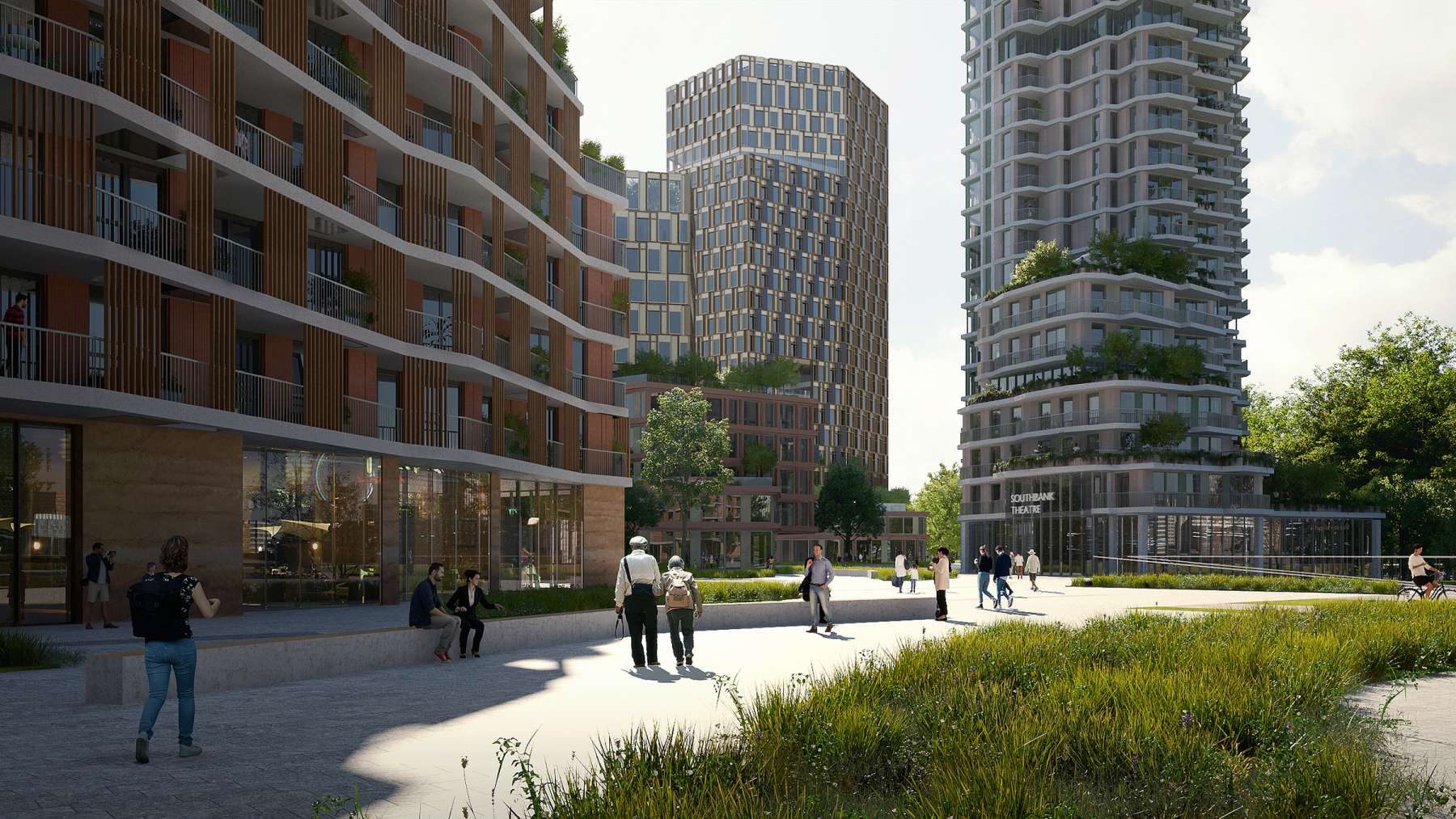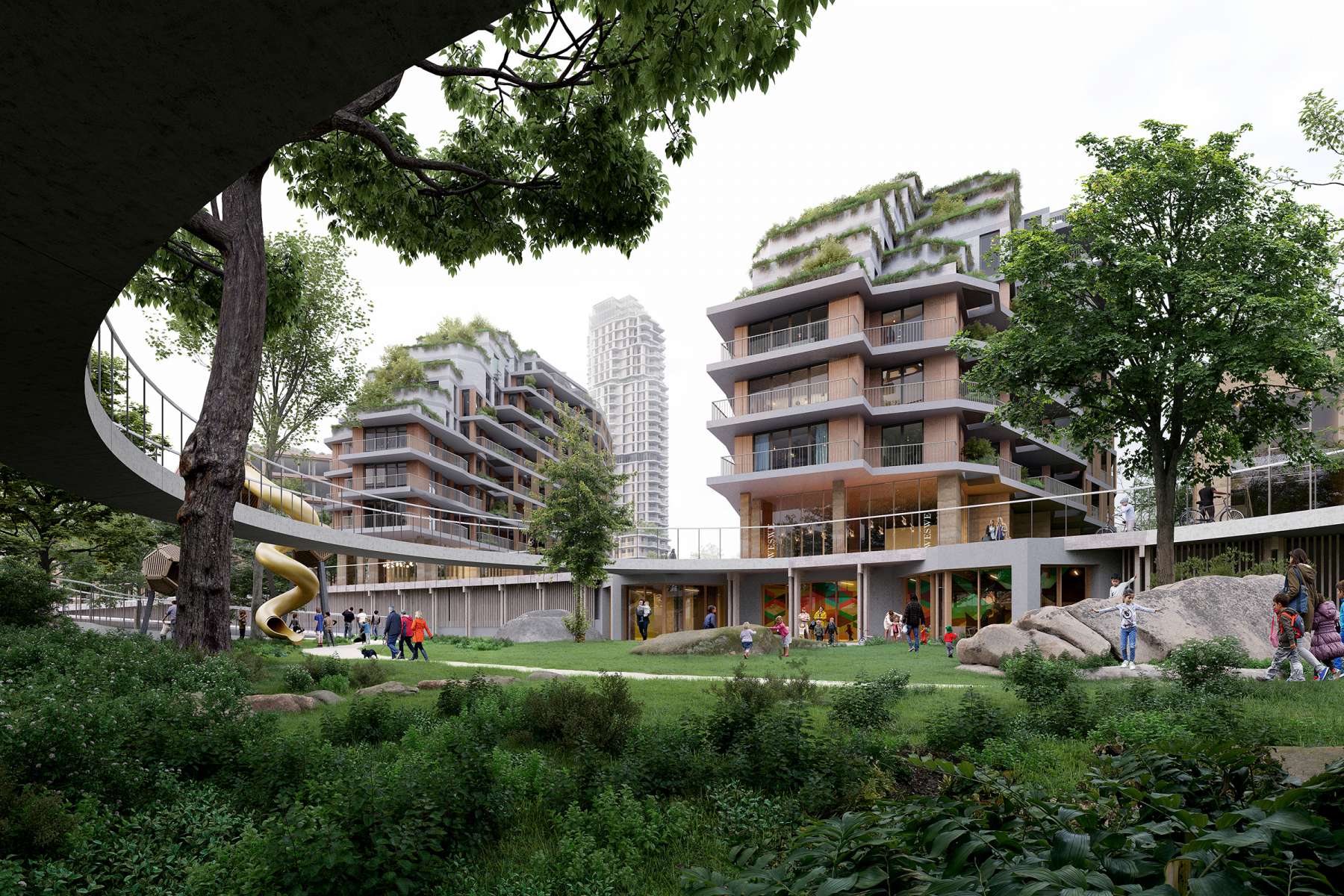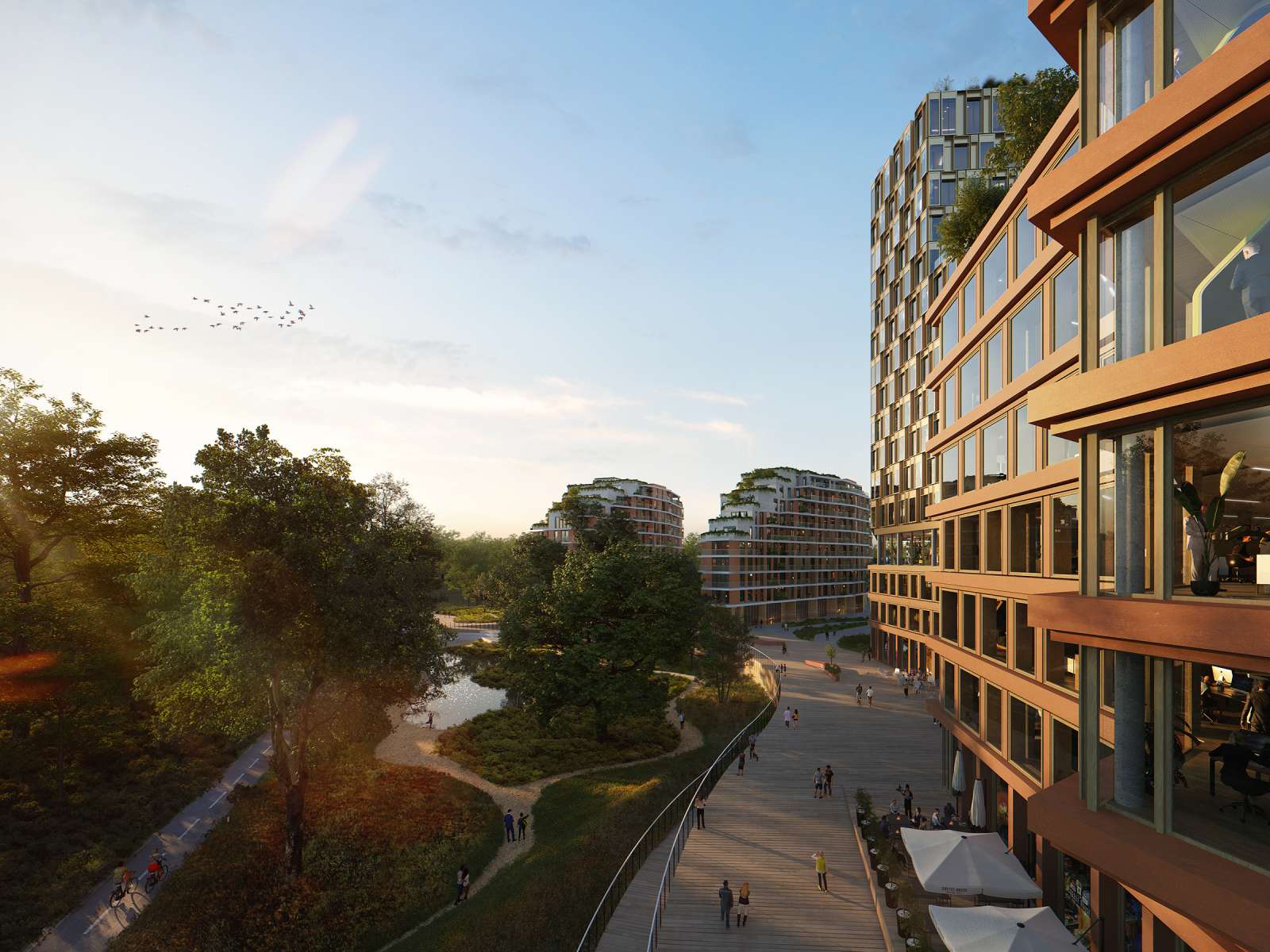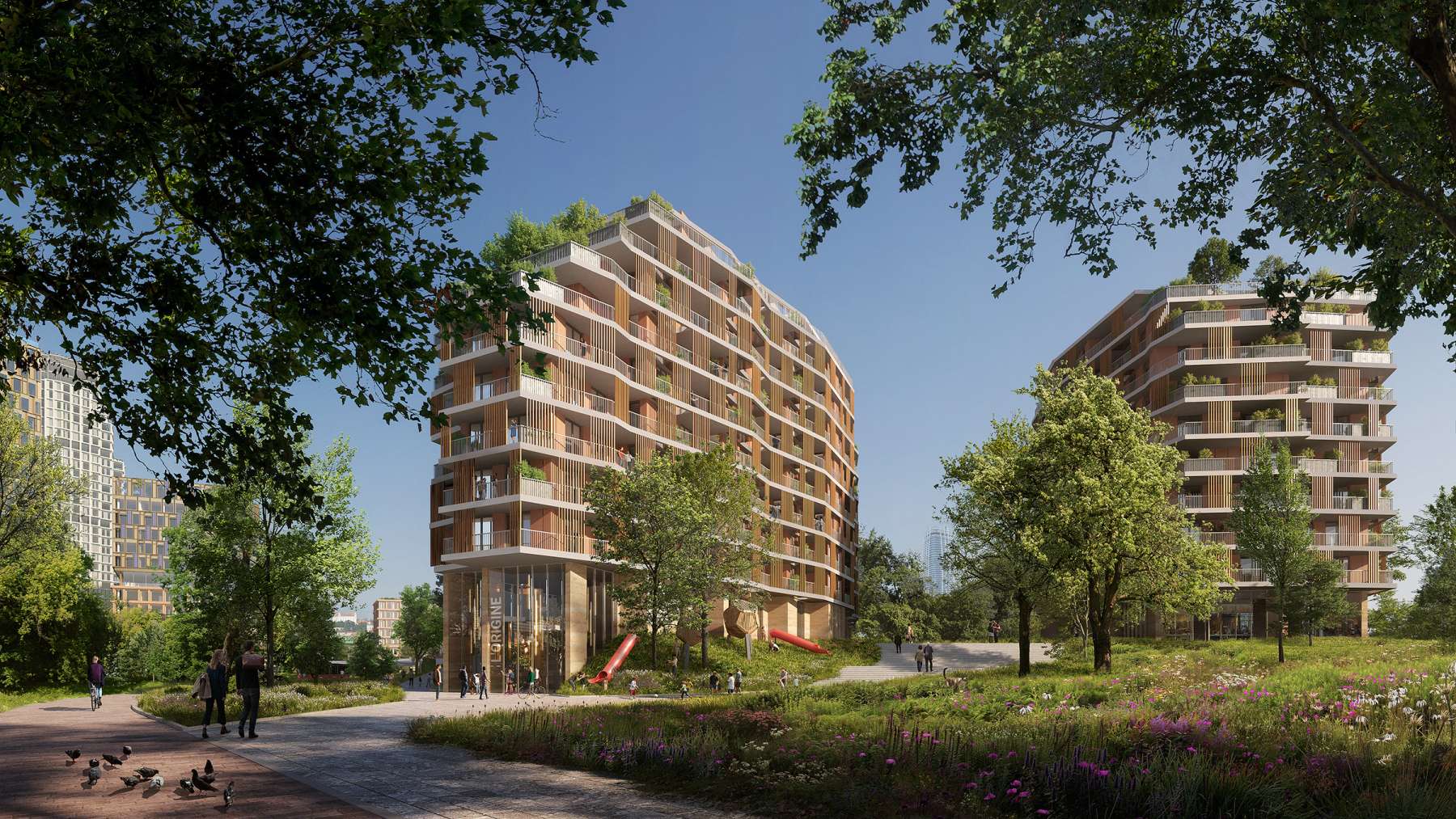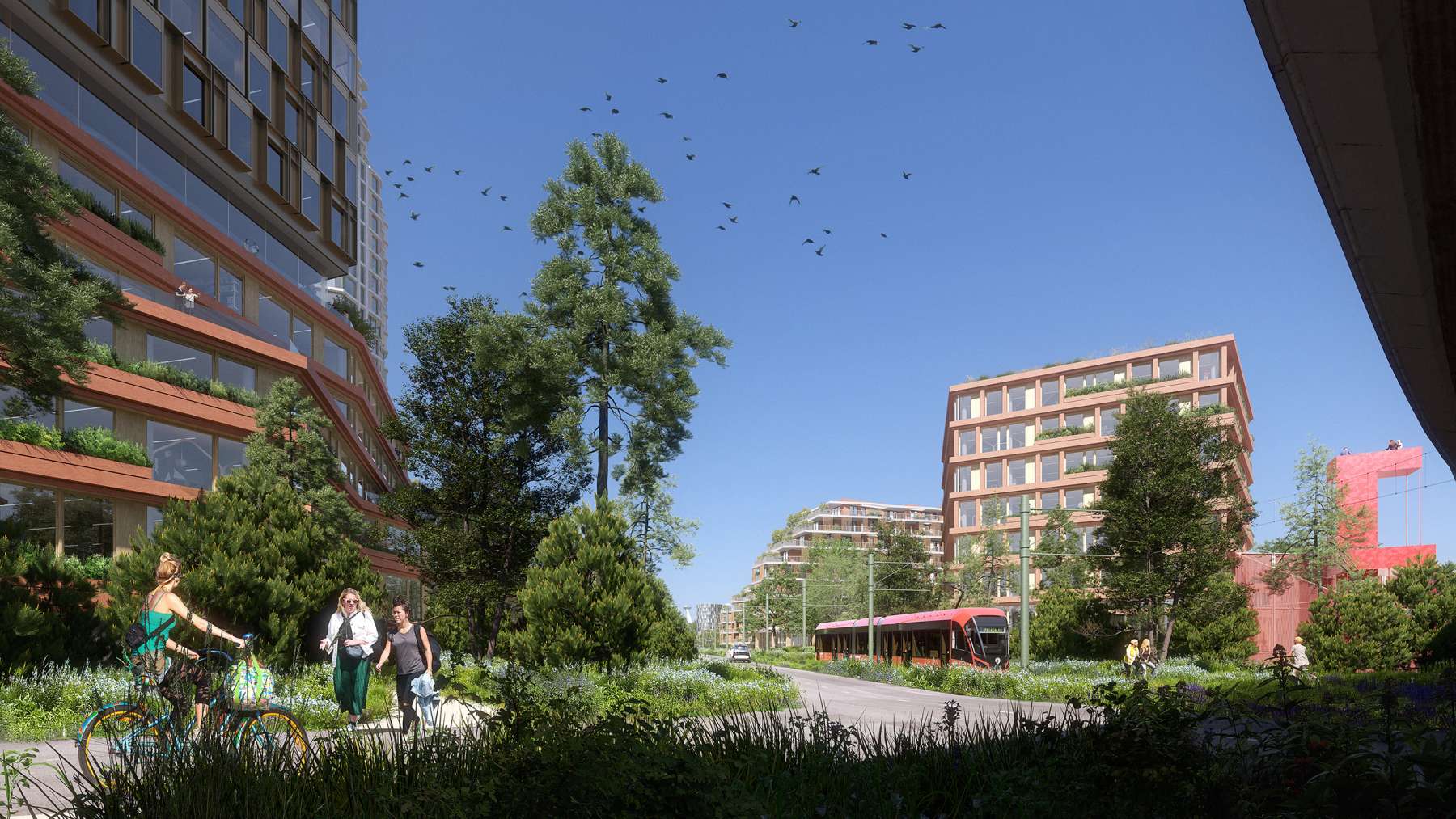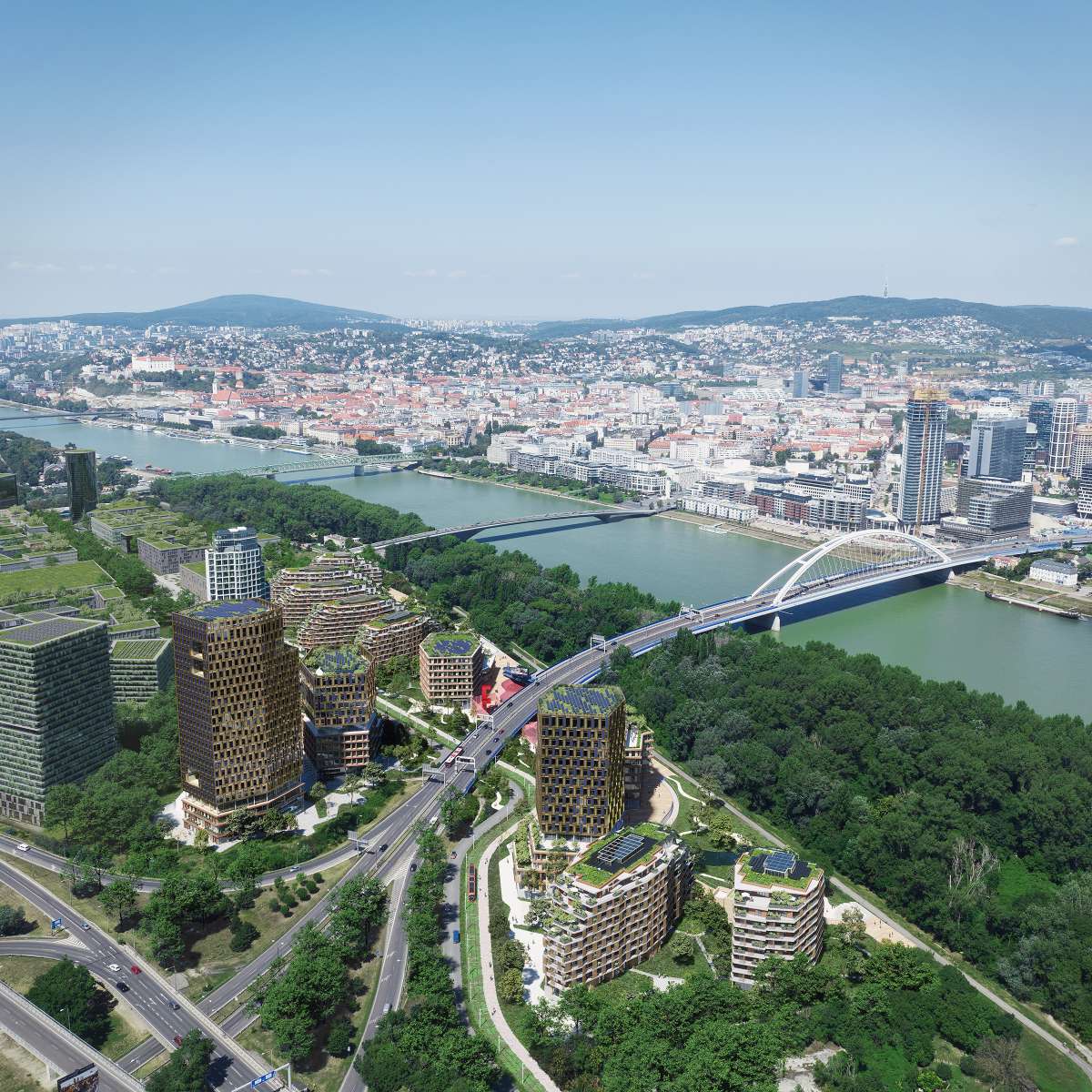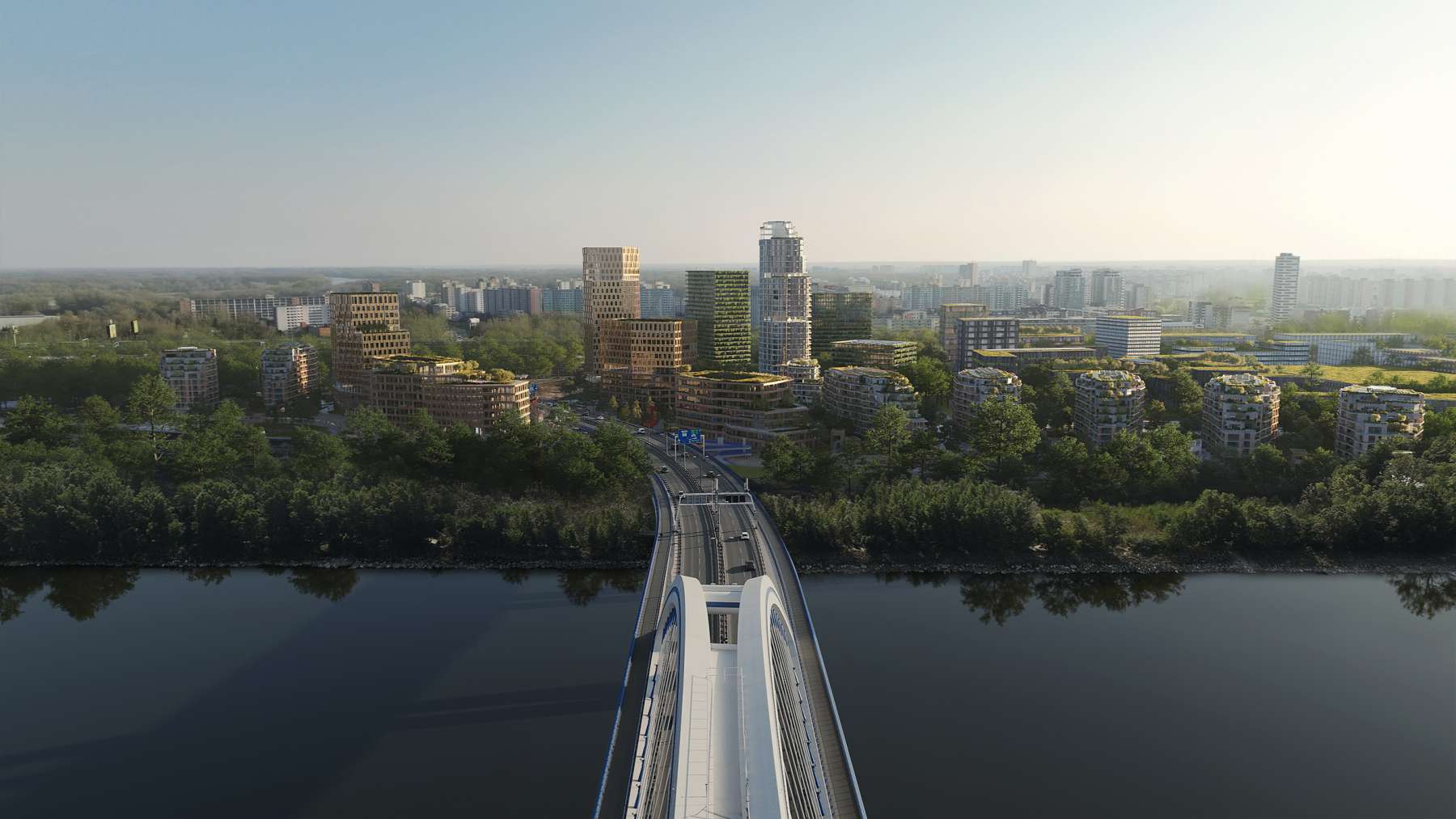Moulsecoomb Place, Brighton – restoration plans given the green light
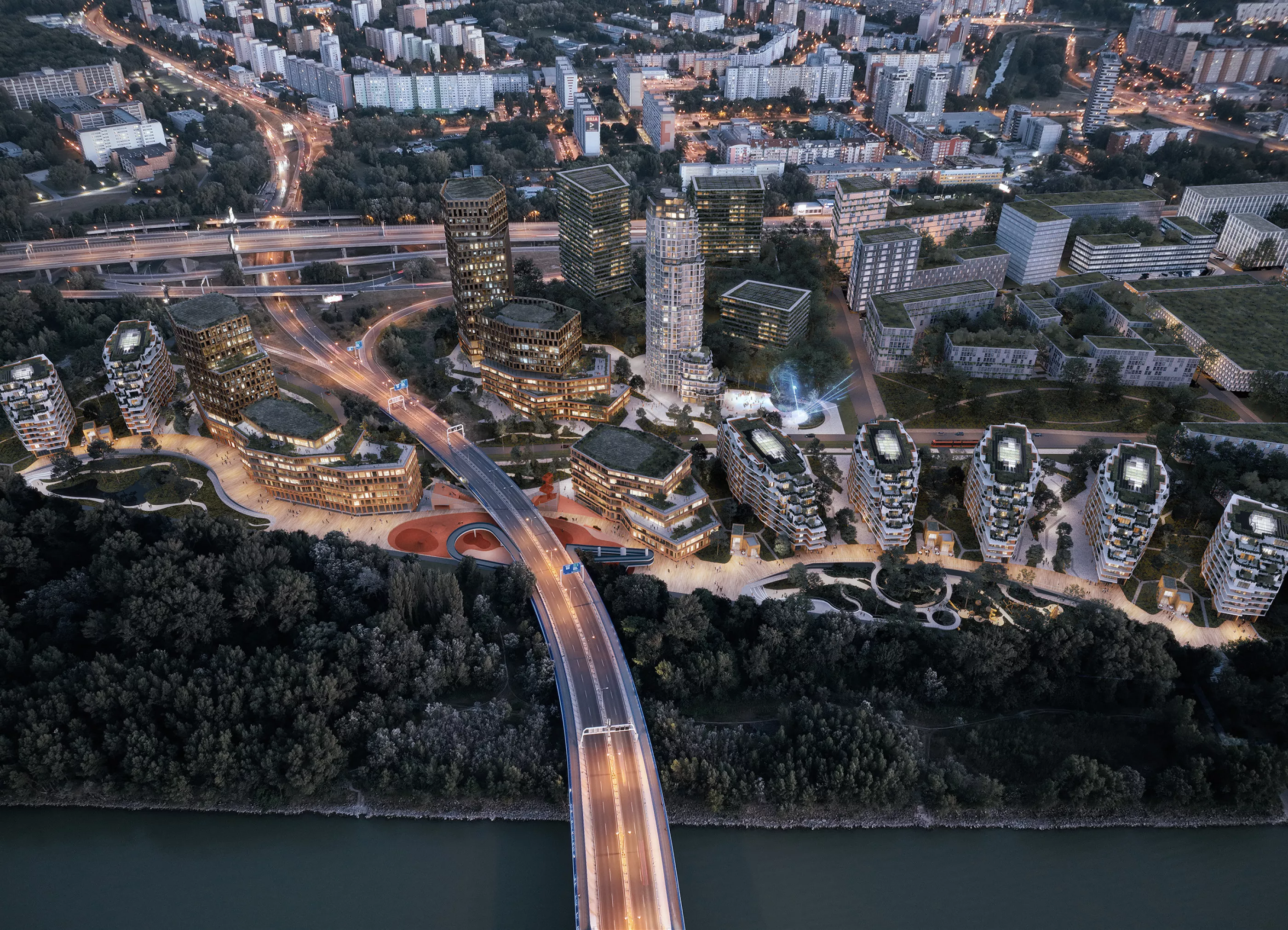
The site in Slovakia’s Capital City has proximity to the River Danube, the Historic City Centre and the Downtown area and is key to the City’s growth as a ‘City by the River’. Snohetta and Studio Egret West, with input from local practice Gro Architekti, will continue to shape, detail and develop a vision for a 210,000 sq m mixed use development.
The development will be a balanced mix of 48% residential and 52% workplace in a central campus with accompanying public realm and retail uses at the lower levels. This new neighbourhood will be interconnected with new and improved transport links and will have a strong focus on public realm and destination placemaking.
David West, Founding Director at Studio Egret West, explains the approach to the urban design framework and public realm:
Working alongside Snohetta, our winning proposal was inspired by the natural landscapes formed along the River Danube. We asked ourselves if we could shape a place as though it had been sculpted by nature and carved by the elements. The result was a proposal of undulating ‘banks’ of accommodation and ‘bowls’ of nature and ecology. The focus is on five distinctive ‘bowls’, which are areas of public realm carved out of the raised level of the masterplan, each with a unique character and function that root our proposal in the ecology of the place. We envisage a multi layered landscape with a mix of uses animating a connecting boardwalk. The boardwalk will become a place where people promenade and a focus for the community of the Southbank, as well as a destination for visitors.”
Images by WAX Architectural Visualizations
Discussing the overarching approach to sustainability, Patrick Lüth, Managing Director at Snohetta, states:
Nature is a key presence on this site, made apparent on our first site visit with Studio Egret West. The ‘bowls’ retain and enclose pockets of existing mature plants and trees, helping to create the sculpted landscape whilst also providing a sustainable urban drainage solution – making water a key aspect of the landscape design. Both the residential and office buildings have a multi-layered and staggered approach to their massing – as though they rise out of the undulating bowl landscape – shaped with nature. This multi-layered approach to the massing creates an infrastructure for plants and wild-life to flourish linking nature from ground floor to roof utilising integrated planters”
David West, Founding Director at Studio Egret West, explains the approach to the homes:
The ambition for all the residential buildings is to create a sustainable neighbourhood facilitating the needs of a diverse demographic. The residential buildings adjacent to the ‘Play Bowl’ and ‘Tranquillity Bowl’, fan out from the boardwalk maximising views towards the River Danube and Bratislava Old Town. The organically shaped, multiple aspect buildings enjoy generous terraces and wrap around balconies. The residential tower sits as a landmark within the scheme. At ground, there is the opportunity to create a community hub around the ‘Culture Bowl’ incorporating a theatre or flexible event space. We aim to make the top of the tower publicly accessible offering incredible 360 ° views of the city and beyond”.”
Patrick Lüth, Managing Director at Snohetta, expands upon the approach to workspace:
The office buildings form a family arranged around the ‘Forest Bowl’. The overall massing steps up from North to South to maximise natural daylighting and views towards Bratislava Old Town. From the highway side the forms define a symbolic “gateway”. The lower volumes and the plinths will be more earthy, natural and green and are mediating between landscape, nature and building. The higher parts of the towers will be more tech inspired and have façades that responds highly to orientation and solar gain, while at the same time generating electricity through integrated PV panels.”
